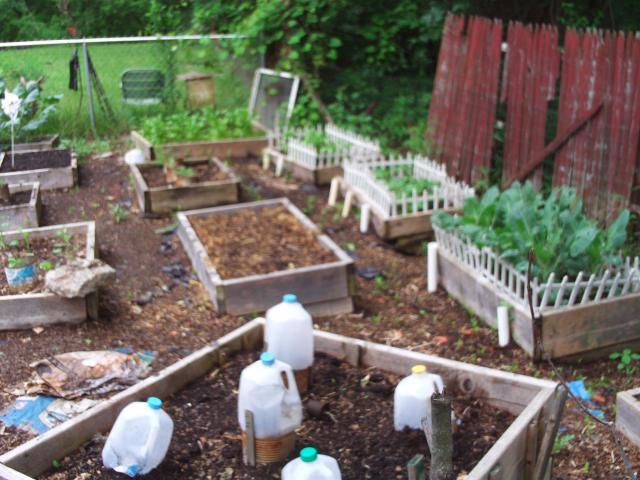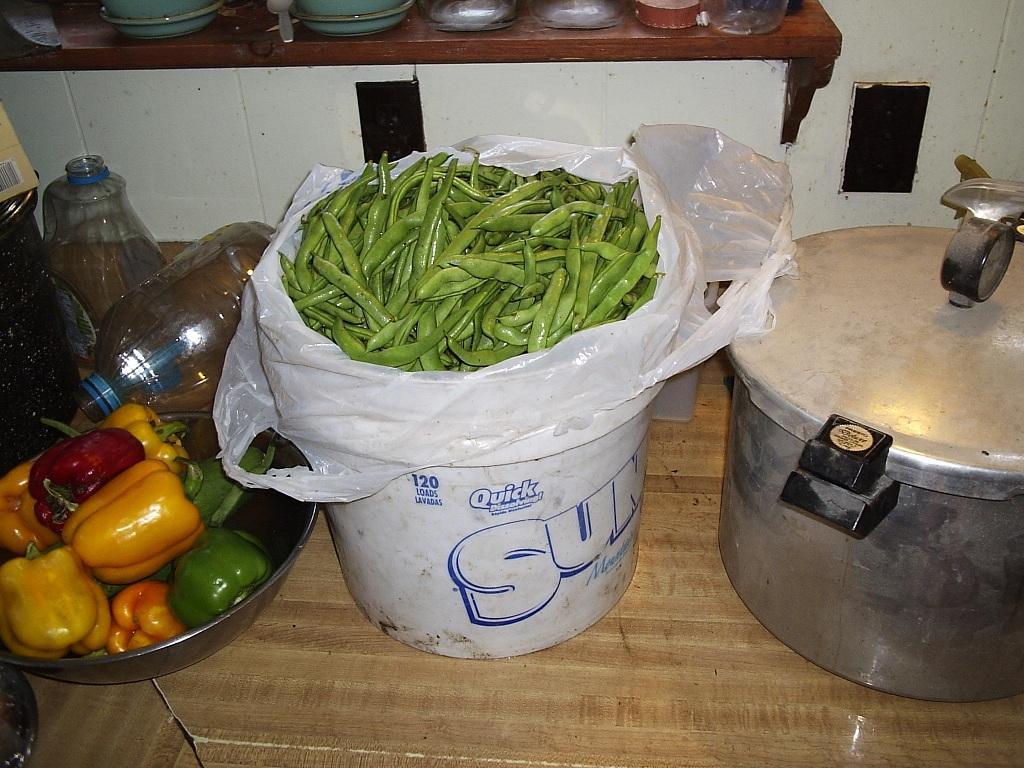I haven't read all the postings but here are some tips that may help.
One: use old newpapers (black and white only) or paper feed bags for mulch to hold in moisture. The drying sounds like lack of water.
Two: plant clover or beans to get nitrogen that will stay in the soil. If you pull up the plants you will see little white nodules on the roots. This is the nitrogen.
Three: use banana peels for added potassium.
Four: add peat moss to help hold moisture and make the soil easier for the roost systems of you plants.
Five: I prefer raised beds. I buy culled 2x6 or larger but you can use 2x4's I suppose. This keeps the soil from getting mashed down, planting and weeding easier. I need no tools to plant or dig up root crops. My garlic just pulls right up, easy peezy.
Six: I use recycled large vegetable cans from the school to help watering and prevent waste. See pics. This system saves water and time. I just fill each can and the water stays where it belongs around the roots of the plants. I use this method for tomatoes, basil, peppers any where I can.
Seven: I just use the weed whacker to "weed" between my raised beds. I've put cardboard down during the winter to block most of the weeds.
Eight: I use gallon milk jugs as mini green houses to start plants two weeks or more ahead of time. I staple wood shims to each side and push these into the ground to hold them in. As the plants grow I place these same jugs over the tops of the cans I use for watering and extend the time plants are covered.
Nine: During dry times use DE as a dust for catapillars and get a head start on those nasty pests. It helps keep the squash plants from being destroyed. Do this at night on dry plants. Seems to work for slugs and snails too.
Ten: Don't forget to rotate your crops. Try not to plant the same thing in the same area two years in a row.
Hope some of these tips help.
Rancher


One: use old newpapers (black and white only) or paper feed bags for mulch to hold in moisture. The drying sounds like lack of water.
Two: plant clover or beans to get nitrogen that will stay in the soil. If you pull up the plants you will see little white nodules on the roots. This is the nitrogen.
Three: use banana peels for added potassium.
Four: add peat moss to help hold moisture and make the soil easier for the roost systems of you plants.
Five: I prefer raised beds. I buy culled 2x6 or larger but you can use 2x4's I suppose. This keeps the soil from getting mashed down, planting and weeding easier. I need no tools to plant or dig up root crops. My garlic just pulls right up, easy peezy.
Six: I use recycled large vegetable cans from the school to help watering and prevent waste. See pics. This system saves water and time. I just fill each can and the water stays where it belongs around the roots of the plants. I use this method for tomatoes, basil, peppers any where I can.
Seven: I just use the weed whacker to "weed" between my raised beds. I've put cardboard down during the winter to block most of the weeds.
Eight: I use gallon milk jugs as mini green houses to start plants two weeks or more ahead of time. I staple wood shims to each side and push these into the ground to hold them in. As the plants grow I place these same jugs over the tops of the cans I use for watering and extend the time plants are covered.
Nine: During dry times use DE as a dust for catapillars and get a head start on those nasty pests. It helps keep the squash plants from being destroyed. Do this at night on dry plants. Seems to work for slugs and snails too.
Ten: Don't forget to rotate your crops. Try not to plant the same thing in the same area two years in a row.
Hope some of these tips help.
Rancher








